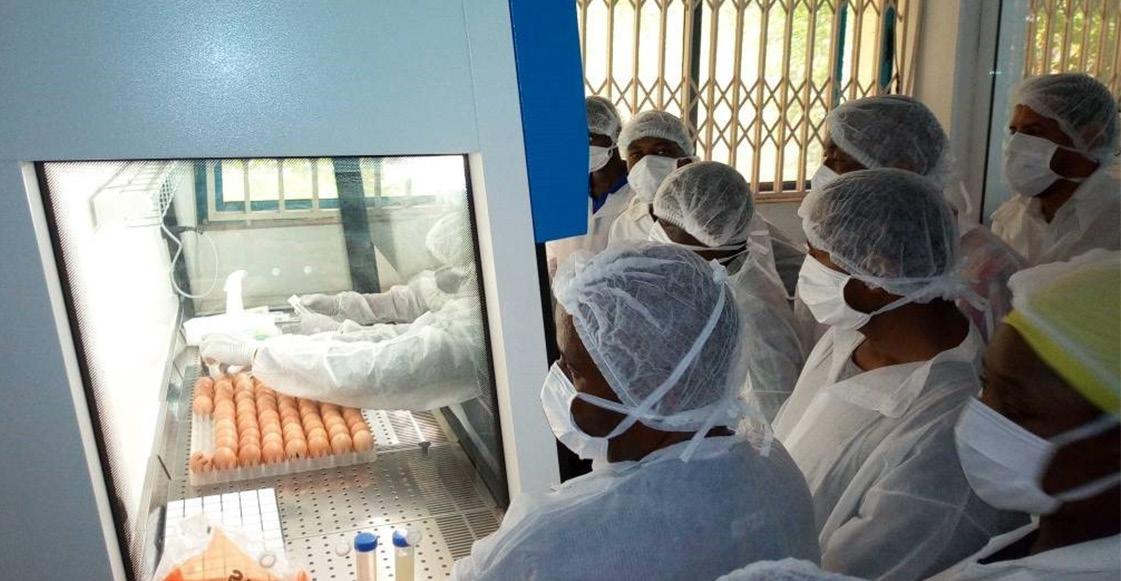
1 minute read
Trained and equipped to fight animal and
from Infectious Diseases
by IAEA
Trained and equipped to fight animal and zoonotic diseases
By Carley Willis and Nicole Jawerth
The AVL team carrying out training on analyzing unhatched eggs to determine exposure to the avian influenza virus. (Photo: IAEA) H undreds of infectious animal diseases are out there, and, without the right preventative measures, they can strike at any time. While most of these diseases spread only between animals, some can jump from animals to people; these are called zoonotic diseases. To help tackle these threats to animals, people and economies, the right training and equipment in diagnostics is needed. One of the ways specialists get that is through support from the IAEA, in partnership with the Food and Agriculture Organization of the United Nations (FAO).
“In some countries there is limited capacity to effectively control diseases that hinder livestock production. This was the case for the Accra Veterinary Laboratory (AVL),” said Joseph Awuni, Deputy Director and Head of the Veterinary Services Directorate at the AVL, in Ghana. “Through IAEA and FAO support, the AVL can now handle major animal disease outbreaks, and the laboratory is also considered a regional support laboratory in West Africa, as we are now able to provide diagnostic support and training to neighbouring countries.” For decades, specialists like those at the AVL have worked with the IAEA and FAO to improve their capacities to use nuclear, nuclear-derived and other methods to detect and diagnose animal and zoonotic diseases. These diagnostic methods are key to preventing, controlling and, when possible, eradicating these diseases, which can have disastrous consequences for animal and human health, as well as for communities and economies.
Outbreaks test skills
The AVL team’s capabilities were put to the test in 2018, when an outbreak of avian influenza virus — a highly contagious infection causing a high rate of organ damage and death in domesticated birds such as chickens — was spotted in isolated areas around Boankra, in Ghana’s Ashanti region. The team used their training and newly installed equipment to rapidly diagnose the disease using nuclear-derived and other techniques, as well as to assist with early containment, preventing a major economic blow to the region’s poultry industry.










